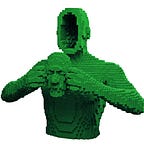Memeing our Way into the Void of the Future
By: J.D. Greenman
Memes are a recondite new form of communication. Steeped in irony and mired in trivial references, memes hobble together connections between the disparate elements of our highly segmented lives — a kind of testimony to unspoken truths and the vulgar conceit of youthfulness but also of the anonymity of the internet. Symbols and images combine and reinvent themselves and establish new connotations wholly decided and interpolated by the viewer. Meaning develops slowly like a photograph, and every meme goes through several incarnations, repeatedly reshaped by successive creators until a perfect flavor is found. This authorless progression is paramount to understanding the creative and political energy of a meme and how it exists outside the confines of established literary and academic orthodoxies. Memes don’t need copyrights.
The word “meme” was coined by evolutionary biologist Richard Dawkins. Dawkins, who has himself become a meme due to his obstinate curmudgeonry and atheistic hubris, first used the term in his 1976 book The Selfish Gene. Meme originally described units of “cultural evolution” analogous to genes in genetic theory. Etymologically rooted in the Greek infinitive for “to imitate,” memes still fundamentally express the notions Dawkins referred to: the transmission of ideas, behaviors, and style within and between cultures. However, memes in their present form are not the particular thing Dawkins envisioned when he created the term. He could never have foreseen that his own personage would be memetized — his name transformed into Dick Dorkins and his tweets preserved in the amber of twenty-somethings’ scorn as a kind of wry, cultural in-joke. Dawkins’ cultural and generational disconnect from the nature of Internet memes could not be more apropos for explicating their power.
Memes are a celebration of the absurd — we find within them a strong undercurrent of satirical and cynical resistance to the forms and patterns of shallow consumerist socialization that anyone living in a modern capitalist society experiences. Memes reveal our inner lives in a way that is free from the confines of our individual limitations because memes are inherently a matter of collective ownership. That understanding of ownership is antithetical to the hierarchical world we live in. Memes are ends in themselves. There are memes which satirize and refute feelings of self-loathing and inferiority, memes which can only be appreciated ironically, memes which revisit children’s media with a cynical twist — all of these attempt to take mastery over the contingent and impersonal nature of our world by locating the absurdity or essence of a subject and then rhetorically throwing our head back in laughter.
Memes come in a variety of styles. Primarily, they are image macros depicting a visual subject with text applied for humorous effect. There are “normie” memes (which are characterized by their blandness and trivialization of complexity) and “dank” memes. Dank memes mock the viral nature of normie memes, often deriving their humor from a self-deprecating sense of absurdity. Indeed, the usage of “dank” as a meme descriptor has its roots in stoner culture, wherein high quality marijuana is referred to as “dank” because of the pungent smell it emits. In this way, dank memes are a refutation of the respectability inherent in normie memes and an exaltation of the weird, strange, and freakish.
It should be said that memes are not limited to image macros. Tweets, Tumblr posts, Vines, and YouTube videos can all be considered memes. Essentially, anything which attains viral status is memetic in nature because it represents the transmission and subsequent evolution of a concept through an unlimited number of unmediated active participants. Twitter user @dril, a legendary figure of “weird Twitter,” is itself a meme insofar as their posting aesthetic is performance art. This concept can be further seen in the YouTube video Dril: The Musical — “content man” — wherein @dril is depicted using a Tomodachi Life Mii avatar singing a number of @dril’s most famous tweets. This is another manner in which different forms of media augment and shape the complexity and universality of a meme, but it also speaks to how memes take on a life of their own through a variety of different authors.
Memes represent a creative urge within us all. They speak to us as if through a darkened mirror and reveal truth in ways that are not expected and perhaps not even desired. Memes as a phenomena indicate a human desire to transcend the limitations of individualist isolation. More importantly, memes embody a desire to transcend those intractable modes of “acceptable” discourse which invariably prevent people from ever finding their own authentic voice. In this way, memes are revolutionary in spirit and suggestive of a world where Internet communications have the potential of dismantling those systems of oppression which have for so long silenced people and mired them in simplistic formulas of passive identity.
